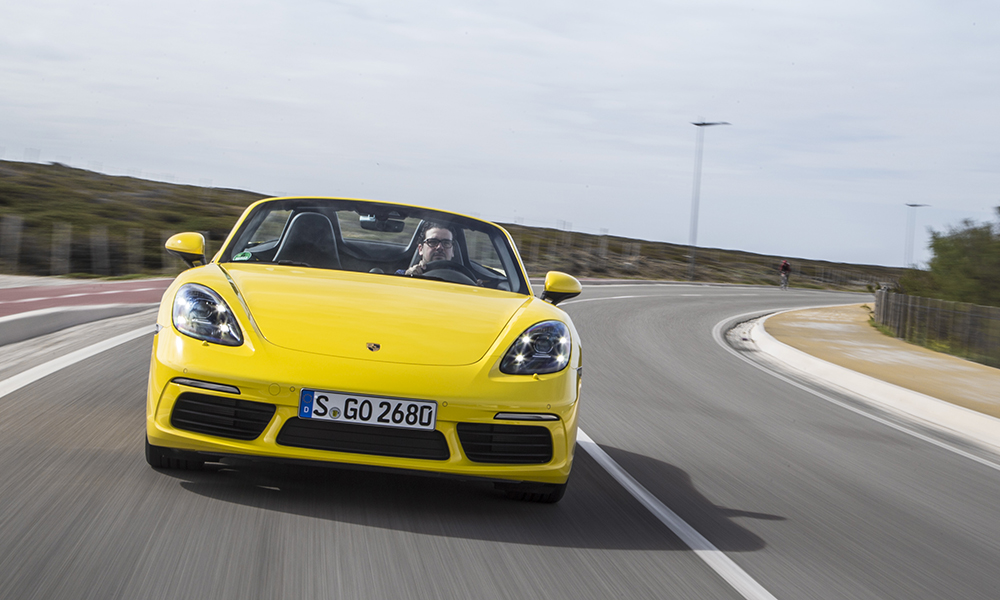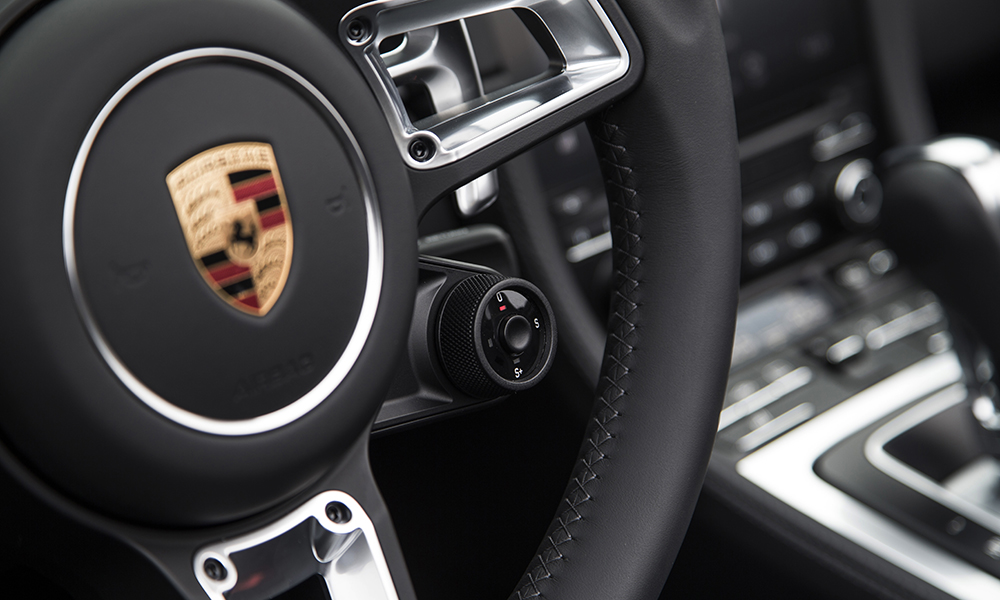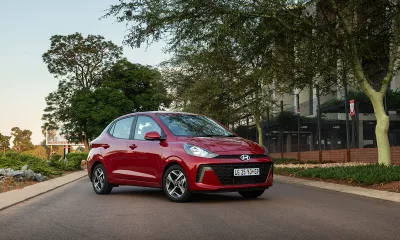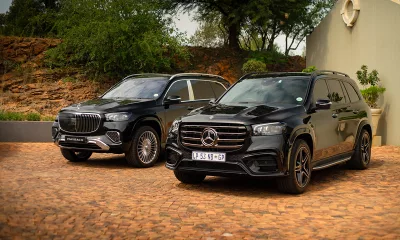LISBON, PORTUGAL – For 20 years, the Boxster has reigned supreme thanks to forgiving, engaging dynamics, rock-solid build quality and, most tellingly, some of the best engines from any sportscar segment. In their final incarnation, the 2,7- and 3,4-litre flat-six units were pretty much perfect.
So, why has Porsche decided to mess with a successful recipe by installing a pair of flat-four turbocharged engines? You already know the answer … quests for improved efficiency and emissions. But then, why not just add turbochargers to a flat-six powertrain, as Porsche has so successfully done with the revised 911 (driven in CAR, January 2016)? It’s an issue of space. Six cylinders and a turbocharger – let alone two – won’t fit in the cavity behind the occupants. As is stands, on both the 2,0- (Boxster) and 2,5-litre (Boxster S) the single turbocharger nestles in the space where cylinders five and six would have been.
But, if this mild diatribe suggests that Porsche has finally shown it’s fallible and designed a poor engine, it’s far from the truth. The Boxster S’ 2,5-litre is one of the best of its kind. But in terms of response, sound, smoothness and depth of character, it’s ultimately not on par with what went before.
THE ENGINE
Right, that’s dealt with. We start our drive in a Boxster S fitted with a six-speed manual gearbox. It’s my first encounter with a new-generation Porsche fitted with a manual and I can’t help but wish I had had my introduction earlier. The shifts are smooth, quick and direct, affording the driving experience an analogue quality that the PDK-equipped cars lack. And the engine is game…
The 2,5-litre features a turbo with variable-turbine geometry, similar to the one employed on the new 911 and makes use of a preconditioning mode in the part-load range that closes the bypass valve, retards ignition timing and leaves the throttle slightly open. As a result, charge pressure does not fully drop and the engine reacts quicker to accelerator inputs.
And it works. Of course, the rev-happy nature of the flat-six is gone (although the new engine can rev to 7 500 r/min) and is here replaced with strong low-to-midrange grunt. Whether such effortless performance will appeal to buyers of a Porsche sportscar is debatable; I’m sure some will lament the fact that the car affords them the option of being less involved in the driving process. Conversely, others will view it as progress.
THE SOUND
Few will argue, however, that the engine sounds rather anodyne. Our launch vehicle was fitted with the sports exhaust option that adds lots of volume – too much, at times, which can become tiring at constant cruising speeds – but very little vocal variance. You may have heard it sounds like a Subaru flat-four, and that’s entirely accurate. It’s not an unappealing noise; it simply feels somewhat out of place in a Porsche.
THE DESIGN
During lunch at a disused military airstrip north of Lisbon, I get a chance to investigate Porsche’s claims that, visually, this is just about an all-new car. Except for the two boot lids, soft top and windscreen, every body panel is new. There are revised lights front and rear, xenon technology is now standard and LEDs an option, the flanks feature new side sills, simpler door handles and two louvers in each of the air intakes feeding cool air to the engines.
The biggest change is a gloss-black trim strip that spans the section between the rear lights and is embellished with three-dimensional Porsche lettering. Of course, there a number of wheel designs on offer and new trim colours. Incidentally, the rear wheels on both models are now half an inch wider, a change that is said to improve directional stability.
Inside, the 911’s excellent new infotainment system makes it debut – it really is as simple to use as a well-designed smartphone – and the 918 Spyder’s beautiful 375 mm-diameter steering wheel is standard.
THE DRIVE
Between that wheel’s three and six o’clock spokes is the switch that controls the driving programmes, from normal through sport, sport+ and individual, in which the settings can be customised. In the centre of the dial is what’s called a Sports Response Button, which on models fitted with the Sport Chrono Package and PDK prepares the engine and transmission for 20 seconds of optimum responsiveness, perfect for when you need to effect a quick overtake. A short drive in a Boxster fitted with the PDK ‘box shows the latter is as brilliant as always.
Likewise, the chassis is idiot-proof. From the 10% quicker electro-mechanical steering (the rack’s been adopted from the 911 Turbo) to the revised damping and spring rebound, the 718 Boxster feels lighter on its feet – even though it isn’t; the new car is a nominal 5 kg heavier – imminently chuckable and confidence-inspiring. Few cars can cover ground this quickly and with such an apparent disdain for the quality of the road surface.
For those who feel the Boxster S PDK is a touch too soft, Porsche now offers the option of a PASM sport suspension option with a 20 mm reduction in ride height. The carmaker expects a model so equipped to be 16 seconds quicker around the Nurburgring Nordschleife than its forebear.
And there’s no hint of scuttle shake, the cabin’s perceived quality is exceptional, the two boots allow more than enough room for a weekend’s luggage and standard equipment, never a Porsche forte, is more generous than before.
THE CRUX
Which means its business as usual in the roadster class, right? Time will tell… I understand why Porsche had to ditch one of the greatest engines of the modern sportscar era, but the new powertrain ultimately slightly dents the Boxster’s appeal. Yes, it’s still undoubtedly the best two-seater soft-top at this price point, and the next, but with BMW’s reported Z5 in development and Mercedes-Benz looking to the next SLC to improve its fortunes in the class, I can’t help but think Porsche has rendered one of its best cars slightly vulnerable…













